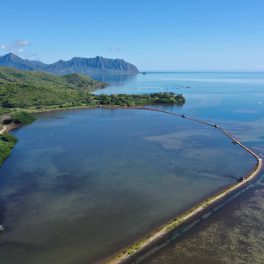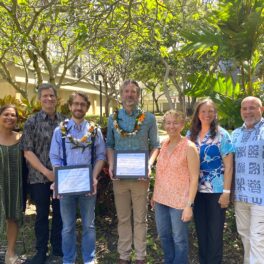Ocean warming increases potential of destructive cyclones
 Hurricane Irma (category 5) looms large approaching Cuba and Florida on September 8, 2017. Credit: NOAA
Hurricane Irma (category 5) looms large approaching Cuba and Florida on September 8, 2017. Credit: NOAA
The Atlantic hurricane season so far has seen a rash of historic extremes, between Harvey dropping up to 50 inches of rain, Irma generating talk of whether to add a category 6 to the intensity scale and Maria strengthening from a tropical storm to a category 5 hurricane in just two days. This recent activity has generated much speculation about the role of climate change in the progression of these and future storms.
A professor of Atmospheric Sciences and researcher the International Pacific Research Center (IPRC) guided a study recently published in Nature Scientific Reports examining the question: “What is the impact of ocean warming on the size and destructiveness of tropical cyclones?”
Tim Li concluded that with warmer sea surface temperatures, tropical cyclones become not only stronger, with higher maximum wind speeds, but also larger, with gale-force winds covering a greater area.
The study found that for every degree Celsius increase of sea surface temperature, the size-dependent destructive potential of typhoons in the western North Pacific and hurricanes in the North Atlantic can increase by 340% and 150%, respectively.
Read more about it in the UH News, at Big Island Now, Maui Time, and in the IPRC press release.




